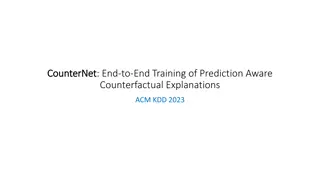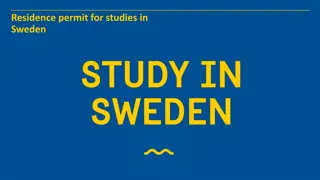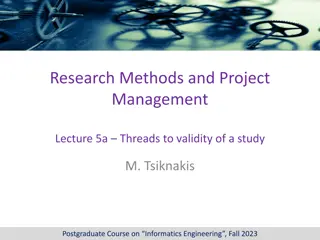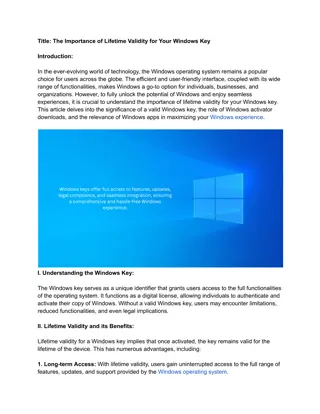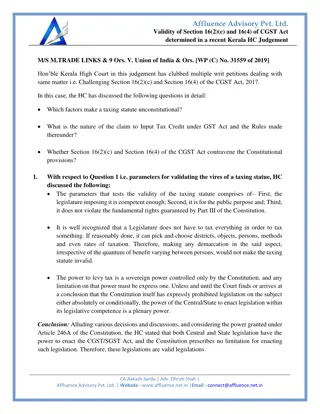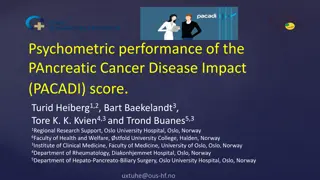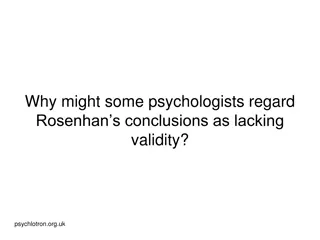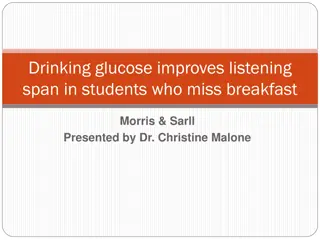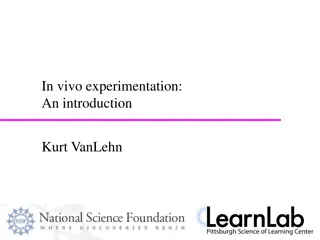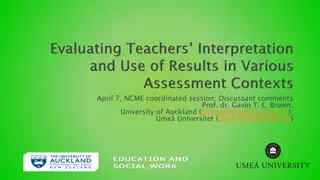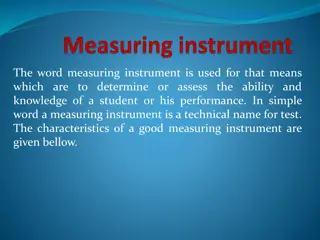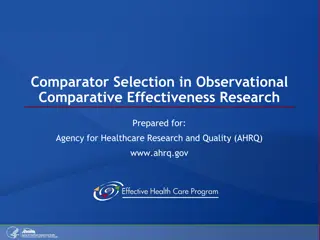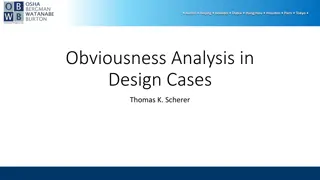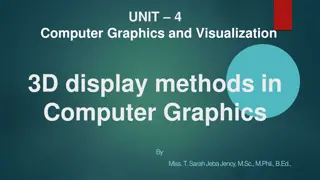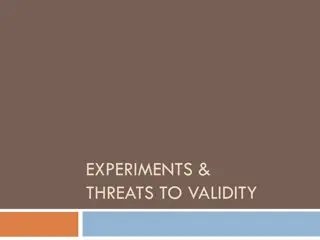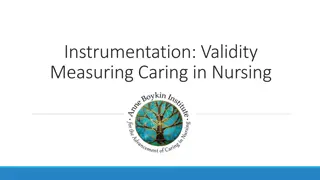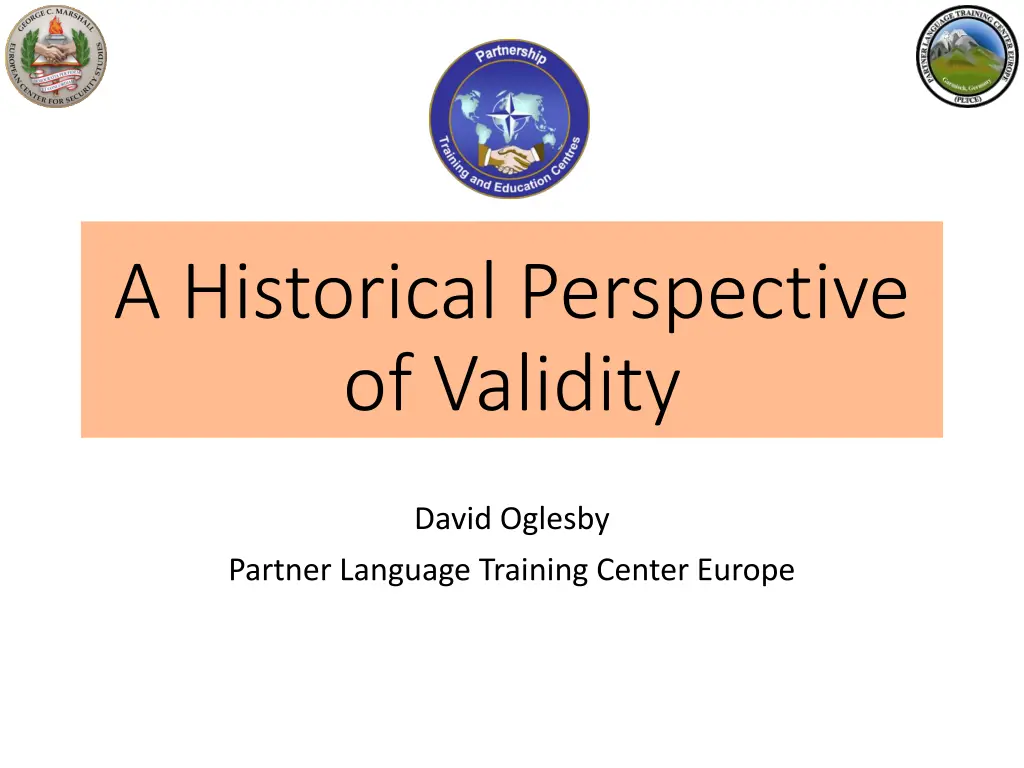
Understanding Validity in Historical Perspective: Marshall Center
Explore the historical perspective of validity as discussed by David Oglesby at the Marshall Center. From defining validity to its significance, this article delves into the evolution of the concept and its challenges in the English language. Discover the origin, importance, and complexities surrounding validity through a series of insightful discussions and tests.
Download Presentation

Please find below an Image/Link to download the presentation.
The content on the website is provided AS IS for your information and personal use only. It may not be sold, licensed, or shared on other websites without obtaining consent from the author. If you encounter any issues during the download, it is possible that the publisher has removed the file from their server.
You are allowed to download the files provided on this website for personal or commercial use, subject to the condition that they are used lawfully. All files are the property of their respective owners.
The content on the website is provided AS IS for your information and personal use only. It may not be sold, licensed, or shared on other websites without obtaining consent from the author.
E N D
Presentation Transcript
Marshall-Center-s A Historical Perspective of Validity David Oglesby Partner Language Training Center Europe
Marshall-Center-s What is Validity? Merriam-Webster: (the quality of being) well- grounded (OE) or justifiable (AF); at once relevant (ML) and meaningful (OE) Cambridge: The state of being acceptable (AF) or reasonable (AF) Oxford: The quality of being logically (AF) or factually (L) sound (OE) ETYMOLOGY 1540s, from Middle French validit or directly from Late Latin validitatem (nominative validitas) "strength," from Latin validus
Marshall-Center-s Why is Validity so Hard to Define? Blame William the Conqueror who introduced the fancy speech of Norman overlords to the Old English-speaking world of plainspoken Anglo-Saxons, resulting in synonym-rich Middle/Modern English. Old English Anglo French snail escargot house mansion wisdom prudence strength validity
Marshall-Center-s The Shibboleth Test Quickly! What s the word for a stalk of grain? ? She sells seashells by the sea shore She sells seashells by the sea shore. She sells shibboleths by the sea shore.
Marshall-Center-s A Modern, Practical Shibboleth Test
Marshall-Center-s An Early Definition of Test Validity Two of the most important types of problems in measurement Two of the most important types of problems in measurement are those connected with are those connected with the determination of what a test the determination of what a test measures measures, and of how consistently it measures. The first should be , and of how consistently it measures. The first should be called the called the problem of validity problem of validity, the second, the problem of , the second, the problem of reliability reliability. . Buckingham, McCall, Otis, Rugg, Trabue, & Courtis (1921) By validity validityis meant the degree to which a test or examination measures what it purports to measure. . Ruch (1924)
Marshall-Center-s Correlation as an Indicator of Validity 1896: Karl Pearson s product-moment correlation coefficient measured the degree of linear dependence between two variables (e.g., test scores with grades). 1905: Alfred Binet s standardized intelligence test used the same instrument, testing conditions, and scoring methods. 1927: Truman Kelley claimed that a final measure of validity was its prognostic value the correlation of a test and a later-demonstrated degree of success or failure. 1946: J. P. Guilford proposed that a test was valid for anything with which it correlates. 1950: Anne Anastasi cautioned that to claim that a test measures anything over and above its criterion is pure speculation
Marshall-Center-s Problems with Notion that Validity = Correlation Finding criterion data Establishing reliability of criterion Establishing validity of criterion If valid, measurable, criteria exist, why are different tests needed? Can the same test be used for different purposes as long as it correlates with external criteria?
Marshall-Center-s Alternatives to Correlation-related Validity Content validity observation of the things and processes which are the aims of instruction is the final proof of validity (Rulon, 1946) Could involve professional judgment of individual test developer (Kelley, 1927) or panel of experts (Gulliksen, 1950) Construct validity a posteriori based on empirical data especially, factor analysis (Spearman, 1904) analysis should reveal latent trait(s) of interest a priori articulated set of theoretical concepts (nomological net) and their interrelations (Cronbach & Meehl, 1955) Loevinger (1957) suggested that since predictive, concurrent, and content validities are all essentially ad hoc, construct validity is the whole of validityfrom a scientific point of view
Marshall-Center-s What is a Construct? According to Cronbach & Meehl (1955), a construct is: a postulated attribute (trait) assumed to be reflected in test performance defined implicitly by a network of associations or propositions in which it occurs J.D. Brown (2000) defines a construct as an attribute, proficiency, ability, or skill that happens in the human brain and is defined by established theories T TRAIT ( (e.g., L2 reading ability RAITOF e.g., L2 reading ability) ) OFINTEREST INTEREST Limit Construct-irrelevant variance Ensure Construct is fully represented
Marshall-Center-s Validity Types in Profusion Theo ry-based Elemental Response Convergent Predictive Circumstantial Construct Internal Factorial Perfo rmance Structural Nomological Ext ernal t est Generic Symptom Cognitive Face Status Inferential Postdictive Divergent Consequential Functional Conceptual Washback Derived Content Co ngruent Statistical Concurrent Operational Sampling Relevant Cro ss-age Criterion-related Specific Essential Administrative
Marshall-Center-s Standards* for Educational and Psychological Tests Edition Validity 1954 Construct, concurrent, predictive, content 1966 Criterion-related, construct, content 1974 Criterion-related, construct, content Unitary (with content-/criterion-/construct-related evidence) Unitary: 5 sources of evidence** 1985 1999 2014 Unitary: more focus on fairness & use of technology * American Psychological Association, American Educational Research Association, National Council on Measurement in Education * * test content, response processes, internal structure, relations to other variables, and consequences of testing
Marshall-Center-s Random Language-Testing Research tests. validity, is crucial for
Marshall-Center-s E Pluribus Unum: A Unitary Concept of Validity Validity is an integrated evaluative judgment of the degree to which empirical evidence and theoretical rationales support the adequacy and appropriateness of inferences and actions based on test scores and other modes of assessment. Samuel Messick (1989)
Marshall-Center-s Validation as Investigations of Inferences Validation requires a definition of what is to be inferred from test scores and data to show that there is an acceptable basis for such inferences Validity is inferred, not measured Validity is judged as adequate, marginal or unsatisfactory Kane (1992) proposed an argument-based approach to validation to make the task of validating inferences derived from test scores both scientifically sound and manageable First Determine inferences to be derived from test scores Second Decide on sources of evidence supporting/refuting inferences Third Gather and analyze evidence Finally Judge defensibility of test score use for a particular purpose
Marshall-Center-s Validation Models for Language Testers Weir (2005) Socio-Cognitive Model Chapelle, Enright & Jamieson (2008) Interpretive Argument-based Model Bachman & Palmer (2010) Assessment Use Argument (AUA) Kane (2013) Interpretation/Use Argument (IUA) Kenyon (2014) Integrated Validation Argument Framework
Marshall-Center-s Toulmin s (1958) Argument Structure Claim Alternative Explanation unless since Warrant on account of s o supports/ refutes Backing Rebuttal Data Data
Kenyons Integrated Validation Argument Framework drawn from Bachman and Palmer Assessment Use Argument A 1. Consequences Beneficial A B 2. Decisions Values Sensitive Impartial USING A B C D E 3. Interpretations Meaningful Impartial Generalizable Model Sufficient 4. Assessment Records A Consistent OPERATIONALIZING TRAINING 5. Assessment Performance II I Assessment Delivery Assessment Implementation I Conceptual Assessment Framework DESIGNING 6. Design ID IC IB IA Assembly Model Task Model Evidence Model Student Model PLANNING III I II 7. Plan Domain Modeling State Anticipated Decisions/Consequences Domain Analysis drawn from Mislevy et al: Evidence Centered Design
Marshall-Center-s Embretson s Universal Validity System Item Design Principles Scoring Models Other Measures Testing Conditions Latent Process Studies Psycho- metric Properties Test Specs Utility Logic/ Theory Domain Structure Impact Internal Meaning External Significance
Marshall-Center-s Internal Categories of Evidence Theory of the subject matter content, specification of areas and their interrelationships Logic/Theoretical Analysis Studies on content interrelationships, prerequisite skills, impact of task features & testing conditions on responses, etc. Latent Process Studies Available test administration methods, scoring mechanisms (raters, machine scoring, computer algorithms), testing time, locations, etc. Testing Conditions Scientific evidence and knowledge about how features of items impact the KSAs applied by examinees-- Formats, item context, complexity and specific content Item Design Principles
Marshall-Center-s Internal Categories of Evidence Specification of content areas and levels, as well as relative importance and interrelationships Domain Structure Blueprints specifying domain structure representation, constraints on item features, specification of testing conditions Test Specifications Item interrelationships, DIF, reliability, relationship of item psychometric properties to content & stimulus features, reliability Psychometric Properties Psychometric models and procedures to combine responses within and between items, weighting of items, item selection standards, relationship of scores to proficiency categories, etc. Decisions about dimensionality, guessing, elimination of poorly fitting items etc. impacts scores and their relationships Scoring Models
Marshall-Center-s External Categories of Evidence Relationship of scores to external variables, criteria & categories Utility Relationship of scores to other tests of knowledge, skills and abilities Other Measures Consequences of test use, adverse impact, proficiency levels & etc Impact
Marshall-Center-s A Black Hole of Evidence Design Construct validity functions as a black hole from which nothing can escape: once a question gets labeled as a problem of construct validity, its difficulty is considered superhuman and its solution beyond a mortal s ken. Denny Borsboom, University of Amsterdam
Marshall-Center-s Paul Newton (Oxford) Proposes Evaluation vice Validation Focus for Evaluation (What needs to be investigated in order to evaluate the policy) Measurement Decisions Impacts Potential of measurement procedure to support accurate measurement of attribute (defined by its construct) Potential of measurement-based decision-making procedure to support accurate decisions Potential of measurement- based decision-making policy to achieve other desired impacts Scientific (technical) Evaluation Potential of construct to scaffold shared meaning within a wider community (street cred or stakeholder buy in) Likelihood that benefits accrued from accurate decisions will be judged to outweigh costs from inaccurate ones Likelihood that benefits accrued from all non- decision-related impacts will be judged to outweigh their costs Ethical (social) Evaluation Legal Evaluation Potential to implement the measurement-based decision-making policy without infringing the law
cheist swali sual ot zka shimon b r v n kysymys fr ga ntrebare kwestie quest o sp rgsm l pregunta vraag soru k simus Frage pyetje k rd s vpra anje jaut jums tapuy pergunta domanda k ts g pitanje ceist klausimas
READING LIST Anastasi A. The concept of validity in the interpretation of test scores. Educ. Psychol. Meas. 1950; 10:67 78. American Educational Research Association, American Psychological Association, & National Council on Measurement in Education (2014). Standards for educational and psychological testing. Washington, DC: American Educational Research Association Bachman, L., & Palmer, A. (2010). Language assessment in practice: Developing language assessments and justifying their use in the real world. Oxford, UK: Oxford University Press. Chapelle, C. A. (1999). Validation in language assessment. Annual Review of Applied Linguistics, 19, 254-272. Chapelle, C. A., Enright, M. K., & Jamieson, J. (2008). Building a validity argument for the test of English as a foreign language. New York, NY: Routledge. Chapelle, C. A., Enright, M. K., &. Jamieson, J. (2010). Does an argument-based approach to validity make a difference? Educational Measurement: Issues and Practice, 29(1), 3-13. Cizek, G. (2012). Defining and distinguishing validity: Interpretations of score meaning and justifications of test use. Psychological Methods, 17(1), 31-43 Embretson, S. (1983). Construct validity: Construct representation versus nomothetic span. Psychological Bulletin, 93, 179-197. Embretson, S. (1998). A cognitive design system approach to generating valid tests: Application to abstract reasoning. Psychological Methods, 3, 380-396. Fulcher, G. & Davidson, F. (2007). Language testing and assessment: An advanced resource book. New York, NY: Routledge.
READING LIST Kane, M. (1992). An argument-based approach to validation. Psychological Bulletin, 112, 527-535. Kane, M. (2006). Validation. In R. Brennan (Ed.), Educational measurement (4th ed., pp. 17-64). Westport, CT: American Council on Education and Praeger. Kane, M. T. (2013), Validating the Interpretations and Uses of Test Scores. Journal of Educational Measurement, 50: 1 73. Lissitz, R., & Samuelsen, K. (2007). A suggested change in terminology and emphasis regarding validity and education. Educational Researcher, 36, 437-448. Loevinger, J. (1957). Objective tests as instruments of psychological theory. Psychological Reports, Monograph Supplement, 3, 635-694. Messick, S. (1989). Validity. In R. L. Linn (Ed.), Educational measurement (3rd ed. pp. 13-103). New York, NY: American Council on Education and Macmillan. Mislevy, R., Steinberg, L., &. Almond, R. (2003). On the structure of educational assessments. Measurement: Interdisciplinary Research and Perspectives, 1, 3-62. Shepard, L. (1993). Evaluating test validity. In L. Darling-Hammond (Ed.), Review of research in education (pp. 405-450). Washington, DC: American Educational Research Association. Sireci, S. (2009). Packing and unpacking sources of validity evidence: History repeats itself again. In R. Lissitz (Ed.), The concept of validity (pp. 19-38). Charlotte, NC: Information Age Publishers.
READING LIST Shepard, L. (1993). Evaluating test validity. In L. Darling-Hammond (Ed.), Review of research in education (pp. 405-450). Washington, DC: American Educational Research Association. Zumbo, B. (2009). Validity as contextualized and pragmatic explanation, and its implications for validation practice. In R. Lissitz (Ed.), The concept of validity (pp.65-82). Charlotte, NC: Information Age Publishers. Kane, M. T. (2013), Validating the Interpretations and Uses of Test Scores. Journal of Educational Measurement, 50: 1 73.

